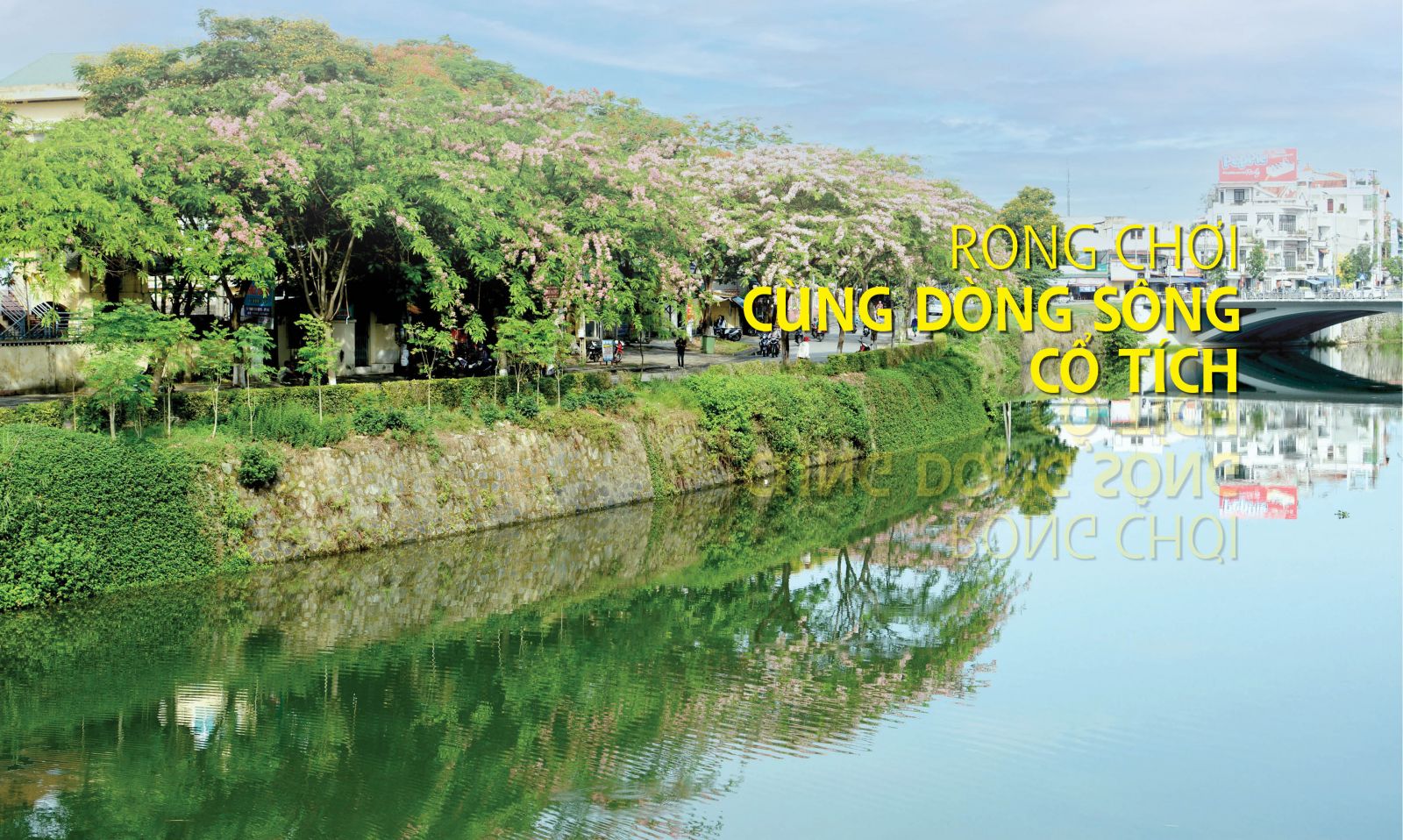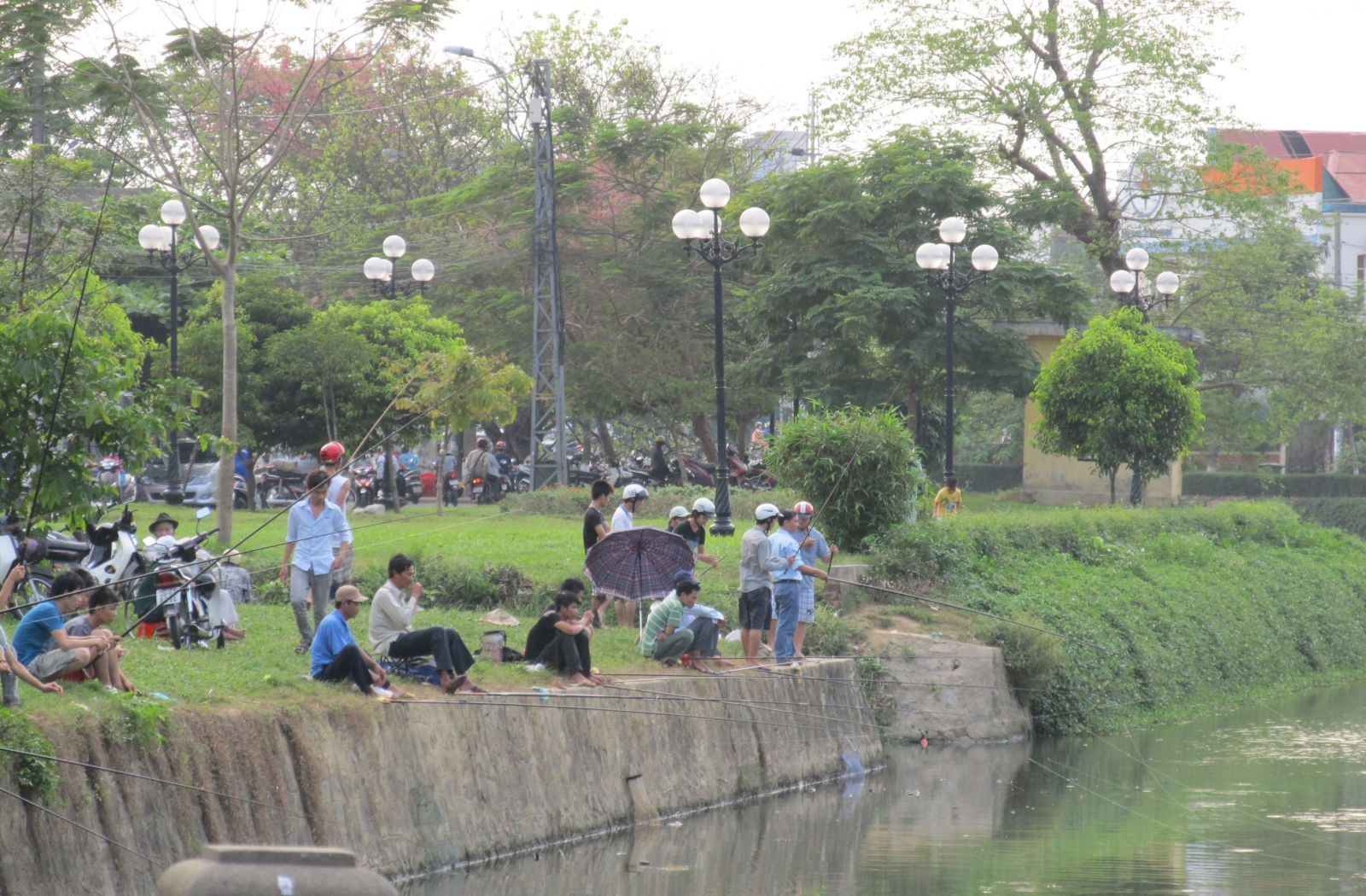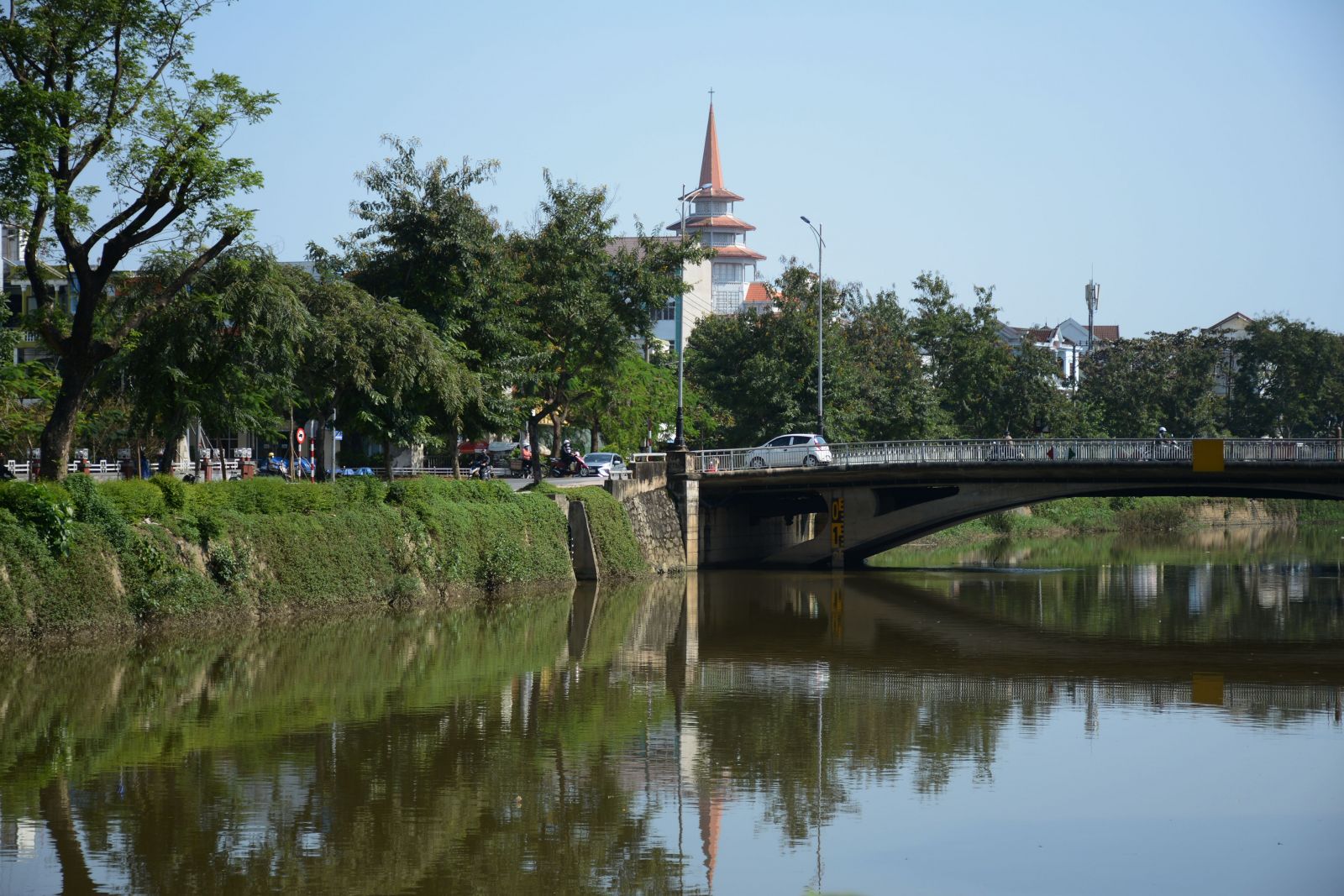
Java cassia blossoms in bloom exalts the beauty of the river
The river, which is now about 30km long, gets its water from the Perfume River at the end of Da Vien dune, flows through the territory of Hue City, Huong Thuy town and pours into Ha Trung Lagoon. During Minh Mang's reign, the Emperor renamed the river into Loi Nong and had it carved into Cuu Dinh (the Nine Dynasty Urns).
I was born and raised in An Cuu. Around 1969 or 1970, my parents moved out into a rented apartment, and then bought a small house on Van Van Street (which is now Hai Trieu Street). The house was built close to the river, so I have had a strong attachment, and witnessed the ups and downs of An Cuu - a tributary of the Perfume River but one of 18 Vietnamese rivers honored to be carved and named on Cuu Dinh.
In my memory, I can clearly remember the summer afternoons when I followed adults down the riverbank to swim and bathe with the children in the neighborhood. It is also strange that despite a lot of houses clinging to both sides, not to mention the presence of a few mobile fishing villages, the river was still so clear back then.
There were times when the water was so clear that when looking down the river from the shore, you could see schools of sharpbelly rushing, perch and snakehead quietly emerging from the riverbed and then diving down to hide very quickly, or clumps of seaweed of all shapes and sizes swaying with the flow like mysterious aquatic forests.
The most interesting thing was sitting on the house every noon to contemplate the old fishers on small boats, with one hand gently stirring the small oars to keep the boat in place and the other hand clicking the bamboo rod to fish the flounder – a specialty fish of this river whose breed was thought to be brought here by Empress Dowager Tu Du from her hometown in Tien Giang.
The flounder, which is delicious and benign, fits well with the local climate. Therefore, it reproduces so quickly that a culvert and the riverside road on the north bank were also named Phac Lac Street – which is now Dang Van Ngu Street.

The return of shrimp and fish attracting many "anglers" to come fishing and relax every summer afternoon...
After 1975, Phu Cam saltwater prevention sluice was built, and the whole river up from An Cuu bridge was blocked with nets to raise fish. As a result, the water could no longer circulate naturally, and people could even wade across the river in the dry season.
The river had been thought to go into the "past", but fortunately its value was recognized: "An Cuu river and its banks are one of the important spatial axes of the landscape of Hue City and have an important role as the drainage system in the south of the city.” (Decision No. 978-QD/UB dated April 15, 2002 of the Provincial People's Committee approving the detailed planning of two banks of An Cuu river). Everyone feels extremely happy with the government’s planning and investment in the embellishment of the river and the landscape on both banks.
Then the riverbed has been dredged, the households living on the banks have been cleared, and the roads Phan Dinh Phung, Phan Chu Trinh, Dang Van Ngu (previously Phac Lac), Hai Trieu (previously Van Van) have also been invested and upgraded. The system of parks and trees on both sides of the river has been decorated and cared for, and large-scale wastewater treatment works has received investments, etc.
As a result, the river water has improved significantly, and more and more fish and shrimp are returning, which attracts many "anglers". When the summer comes, the two banks of the river look cool with the green plants and vivid with yellow, red, pink and purple flowers of kassod, Java cassia blossom, cassia grandis, crape myrtle, etc.
The whole quarter of the city looks radiant, causing both locals and tourists to stop to admire. Many shops and services have been opened, making the banks of the river more and more joyful and lively.
I have dreamed of a tour along this fairy-tale river for so many times. It can be a cycling tour or a boat ride depending on the needs and preferences of the tourists. The roads are good, and the landscape is getting more and more beautiful day by day.
More importantly, there are many interesting things on both sides of the river to admire and feel nostalgic for. Right at the source of the point adjacent to the Perfume River, in the most favorable position lies the Perfume River Theater with a scale of 1,000 seats, which has just been completed and put into operation. Not far away is Hue Railway Station - the oldest train station in Vietnam (1908).
Further down is Ben Ngu, where Emperors of the Nguyen Dynasty used to anchor their boats to go ashore to worship at Nam Giao Esplanade. This place is closely associated with the name of the famous patriotic Phan Boi Chau. Tourists just need to cycle or leave the boat for a short walk, then they can find the mausoleum and memorial house of "The Old Man of Ben Ngu" right at the top of the slope. Also at this place, in March 2017, Japanese Emperor Akihito and Empress visited and bowed in front of the Self-righteousness Stele of Mr. Phan – who came to Japan in the Dong Du movement (Journey to the East) in hope of regaining independence and freedom for the country.
On the other side (north bank) is Ben Ngu market and Lac Tinh Vien – The “Nha Ruong” (girder house) with the area of more than 2000 square meters wide of poet Hong Khang, which is considered as the typical girder house of Hue and has been recognized as a provincial-level architectural and artistic relic.
Not far away is Tung Thien Vuong Residence of the Poetry King Mien Tham, who was commended by Emperor Minh Mang in the famous verse "Tung and Tuy’s poems make those of Tang Dynasty less prosperous.”

The Palace of Kien Thai Vuong and the Palace of An Dinh reflecting on the river together
Travelling a little further, at 145 Phan Dinh Phung (previously 79) is the memorial house of H.E. Tu Cung. This is where Doan Huy – the last Empress Dowager of the Nguyen Dynasty – lived the last days of her life from 1957 to 1981.
Not far away is An Dinh Palace, Khai Dinh's private palace ever since he was a crown prince until he became king. This palace has a harmonious combination of Asia-European architecture and is considered by tourists as "a splendid jewel in the dreamland of Hue".
Last year, An Dinh Palace was chosen as the main setting for the movie “Camellia Sisters V” with scenes that made the audience flutter and eager to discover. Right next to An Dinh is the palace of Kien Thai Vuong - the father of three Nguyen Emperors: Dong Khanh, Kien Phuc and Ham Nghi. The shrine, which is still quite intact, is also an interesting place for those interested in history as well as for tourists who love to explore.

Redemptorist Church seen from An Cuu river
On a stretch of only more than a kilometer lie so many interesting places, not to mention the two Catholic Churches, the Phu Cam Cathedral and the Redemptorist Church, which are famous for their unique architecture and history of the south and north banks.
There is also a green Nguyen Truong To Street with two rows of camphor trees and a coffee shop called Gac Trinh opened at the apartment where the musician Trinh Cong Son used to live and compose. Then, downstream, there is Van Van mausoleum, the church of the family of Prof. Dang Van Ngu, the rice field of Mr. Thuong related to scholar Pham Quynh, Thanh Toan Tile Bridge with the "Rural market in festive days” held regularly every Festival, etc.
A cycling or a boat tour along the fairy-tale “cloudy in sunshine, transparent in rain” river is absolutely worth building. Then, with the presence of tourists who wander to experience or shop, the landscape, lifestyle, and business habits of residents on both sides of the river will also be affected to become more charming and effective. The potential of the city of culture and heritage should not and cannot be slumbered any longer.
Story and photos: DIEN THONG